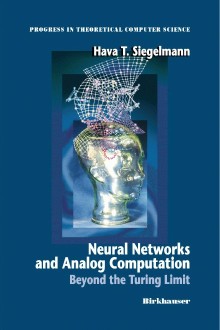|
Neural Networks and Analog Computation : Beyond the Turing Limit
The theoretical foundations of Neural Networks and Analog Computation conceptualize neural networks as a particular type of computer consisting of multiple assemblies of basic processors interconnected in an intricate structure. Examining these networks under various resource constraints reveals a continuum of computational devices, several of which coincide with well-known classical models. What emerges is a Church-Turing-like thesis, applied to the field of analog computation, which features the neural network model in place of the digital Turing machine. This new concept can serve as a point of departure for the development of alternative, supra-Turing computational theories. On a mathematical level, the treatment of neural computations enriches the theory of computation but also explicates the computational complexity associated with biological networks, adaptive engineering tools, and related models from the fields of control theory and nonlinear dynamics. The material in this book will be of interest to researchers in a variety of engineering and applied sciences disciplines. In addition, the work may provide the base of a graduate-level seminar in neural networks for computer science students. Special care has been taken to explain the theory clearly and concisely. The first chapter reviews the fundamental terms of modern computational theory from the point of view of neural networks and serves as a reference for the remainder of the book. Each of the subsequent chapters opens with introductory material and proceeds to explain the chapter's connection to the development of the theory. Thereafter, the concept is defined in mathematical terms.
|
